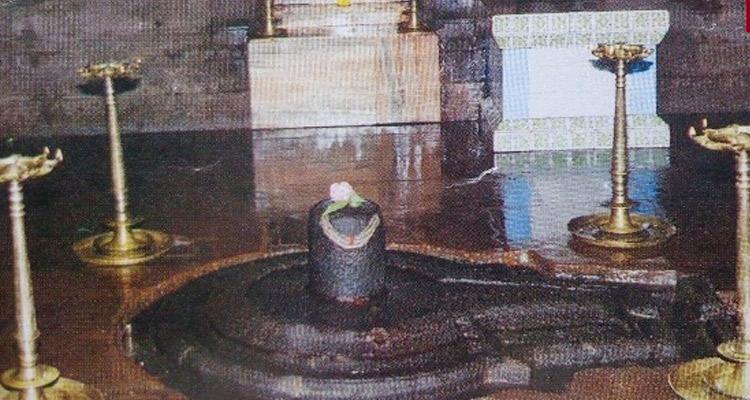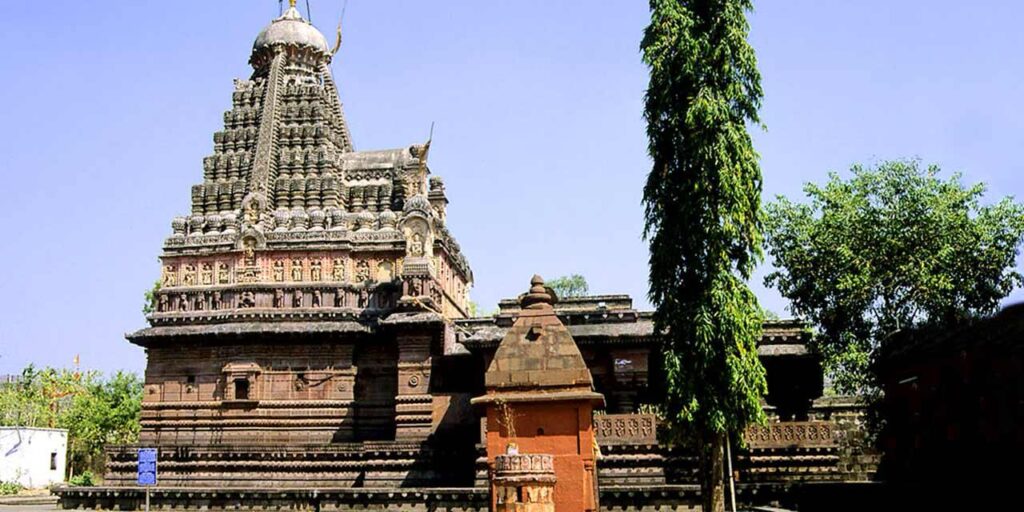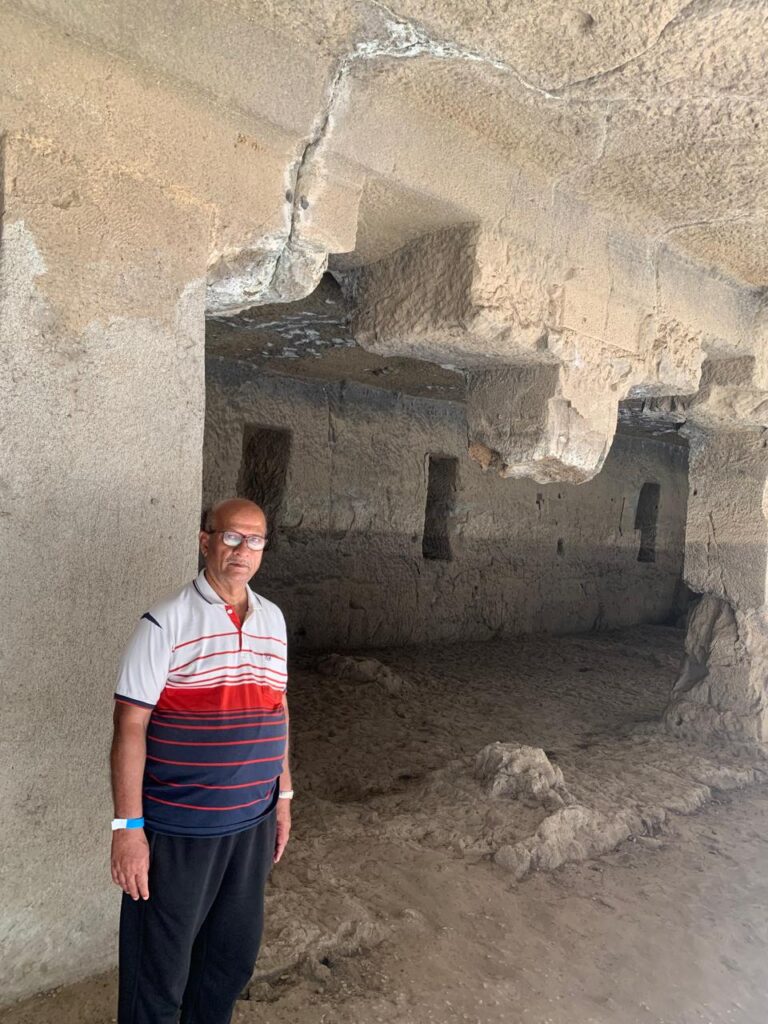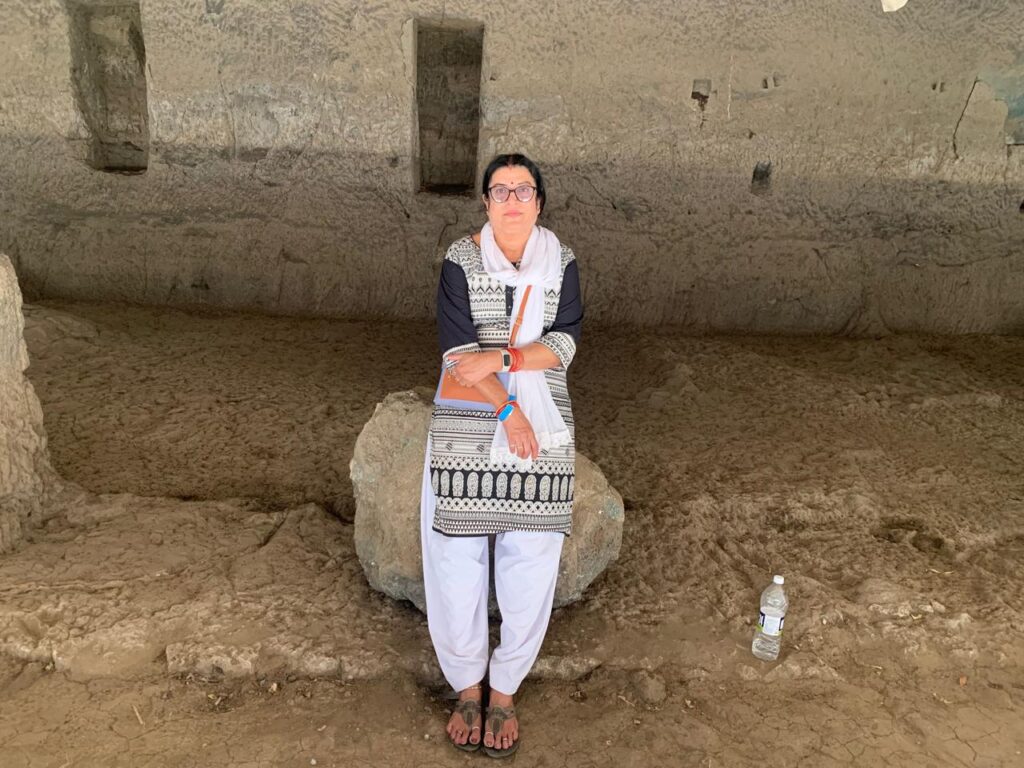
A Pilgrim’s Journey: Visiting the Grishneshwar Jyotirlinga Temple
By Lokanath Mishra:
On 28th March 2025, I embarked on a spiritual journey to the revered Grishneshwar Jyotirlinga Temple, situated in the quaint village of Verul, Aurangabad district, Maharashtra. As I approached the temple, I could feel the air thick with devotion and spirituality.

The Grishneshwar Jyotirlinga Temple is one of the 12 sacred Jyotirlinga mandirs, and its rich history and cultural significance drew me in. As I entered the temple premises, I was struck by the stunning Hemadpanthi architecture and the serene atmosphere that pervaded the air.

As I made my way through the temple, I learned about its tumultuous past, having been destroyed and rebuilt several times over the centuries. The temple’s current structure, rebuilt in 1729 under the sponsorship of Queen Gautama Bai Holkar of Indore, stood as a testament to the enduring power of faith and devotion.
As I prepared to enter the sanctum sanctorum, I was reminded of the local Hindu tradition, which dictates that men must go bare-chested as a sign of respect and humility. I felt a sense of reverence wash over me as I followed this tradition, and I was deeply moved by the experience.
As I stood before the sacred Jyotirlinga, I felt a deep sense of connection to the divine. The experience was truly transcendent, and I felt my heart and soul filled with peace, love, and devotion.
As I departed the temple, I felt grateful for the opportunity to visit this sacred site. The Grishneshwar Jyotirlinga Temple is a true marvel of spiritual significance, and I felt blessed to have experienced its beauty and power.
The Miraculous Story of Grishneshwar Jyotirlinga

In the southern region of India, near the Devgiri Mountain, there lived a pious Brahmin named Sudharma. He resided with his loving wife, Sudeha, who was unable to bear children due to astrological circumstances. Despite their deep love for each other, Sudeha’s desire for children led her to persuade Sudharma to marry her younger sister, Ghushma.
Ghushma, a humble and virtuous woman, proved to be an ardent devotee of Lord Shiva. She would create and worship one hundred and one earthly Shivalingas daily, showcasing her unwavering dedication. As a result of her devotion, Ghushma soon gave birth to a healthy child, filling both Sudeha and Ghushma with immense joy.
However, as time passed, Sudeha’s mind became tainted with jealousy and evil thoughts. She began to resent Ghushma and her child, feeling that they had usurped her place in the household. One fateful night, Sudeha’s malice reached its peak, and she committed the heinous act of killing Ghushma’s young son while he slept. She then disposed of his body in the same pond where Ghushma would immerse her earthly Shivalingas.
The next morning, the household was thrown into chaos as the news of the murder spread. Sudharma and his daughter-in-law were consumed by grief, but Ghushma remained calm and composed, continuing her worship of Lord Shiva as usual.
After completing her puja, Ghushma proceeded to release the mortal Shivalingas into the pond. As she returned, she was astonished to see her beloved son emerging from the pond, alive and well. Lord Shiva appeared alongside the boy, expressing his anger and willingness to punish Sudeha for her cruel deed.

Ghushma, however, demonstrated remarkable compassion and forgiveness, pleading with Lord Shiva to spare Sudeha’s life. She also requested that Lord Shiva remain in the place forever, benefiting humanity. Lord Shiva, pleased with Ghushma’s devotion and kindness, accepted her prayers and manifested himself as the Grishneshwar Jyotirlinga.
Thus, the Grishneshwar Jyotirlinga came to be, a testament to the power of devotion, forgiveness, and compassion. Ghushma’s selfless love and worship of Lord Shiva had transformed her into a symbol of hope and inspiration, earning her the reverence of generations to come.
